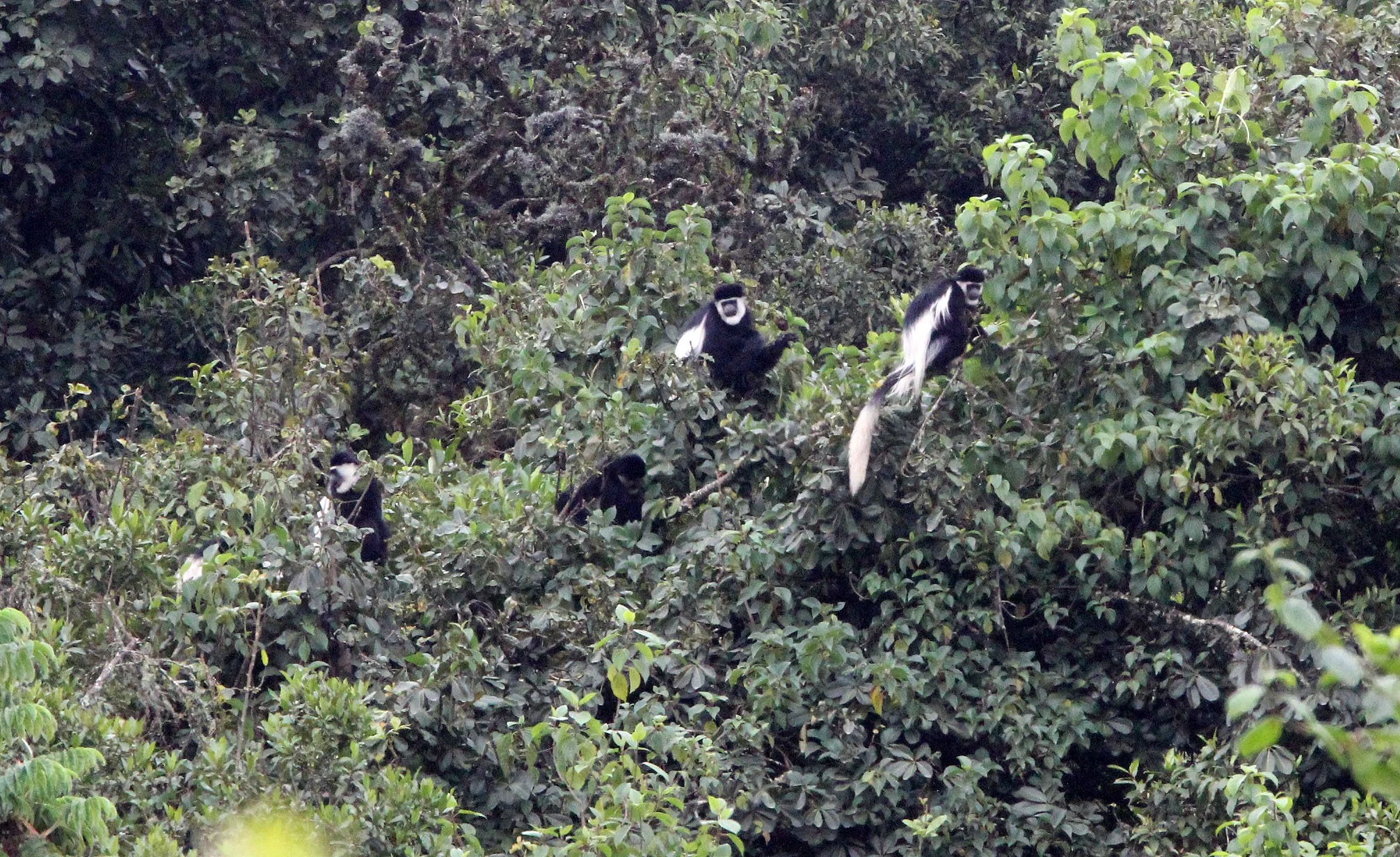
The mantled guereza (Colobus guereza), also known simply as the guereza, the eastern black-and-white colobus, or the Abyssinian black-and-white colobus, is a black-and-white colobus, a type of Old World monkey. It is native to much of west central and east Africa, including Cameroon, Equatorial Guinea, Nigeria, Ethiopia, Kenya, Tanzania, Uganda and Chad. The species consists of several subspecies that differ in appearance. It has a distinctive appearance, which is alluded to in its name; the long white fringes of hair that run along each side of its black trunk are known as a mantle. Its face is framed with white hair and it has a large white tail tuft.
The mantled guereza is diurnal and arboreal, found in both deciduous and evergreen forests. It is an adaptable species that can cope with habitat disturbance and prefers secondary forest close to rivers or lakes. Although previously thought only to eat leaves, it also eats seeds, fruits, and arthropods. It is able to digest plant material with a high fibre content with its specialised stomach and may only eat from a few plant species at a time. It is preyed on by birds of prey and some mammals, such as the common chimpanzee and the leopard.
The mantled guereza lives in social groups of three to fifteen individuals. These groups normally include a dominant male, several females, and the offspring of the females. It has a polygynous mating system and copulation is initiated with vocal communication. After a gestation period of just over five months, infants are born with pink skin and white fur, which darkens to the adult coloration by three to four months. The mantled guereza is well known for its dawn chorus, the males' "roar" is a method of long-distance communication that reinforces territorial boundaries. It also makes other vocalization and uses body postures, movements, and facial expressions to communicate.
The mantled guereza is listed as Least Concern by the International Union for Conservation of Nature (IUCN) because it is widespread – although it is locally threatened in some areas, the decline is not great enough to list it in a higher category of threat. However, one subspecies found in Kenya is listed as Endangered. It can survive well in degraded forests and in some areas it is more common in logged areas than unlogged ones. The mantled guereza is also threatened by hunting for bushmeat and for its skin.
Western guereza, Colobus guereza occidentalis, occurs from eastern Nigeria, Cameroon, and Gabon at the edge of its western range to South Sudan and Uganda, west of the Nile.
Omo River guereza or Abyssinian black-and-white colobus, C. g. guereza, found in Ethiopia, in the highlands west of the Rift Valley down to the reaches of the Awash River, the Omo River, and in the Blue Nile gorge.
Djaffa Mountains guereza or Neumann's black-and-white colobus, C. g. gallarum, found in the Ethiopian Highlands east of the Rift Valley.
Dodinga Hills guereza, C. g. dodingae, found in the Didinga Hills in South Sudan.
Mau Forest guereza, C. g. matschiei, occurs from western Kenya and Uganda south into northern Tanzania.
Mt Uaraguess guereza or Percival's black-and-white colobus, C. g. percivali, found in the Matthews Range in Kenya.
Eastern black-and-white colobus, C. g. kikuyuensis, occurs in Kenya on the Ngong Escarpment of Mount Kenya and in the Aberdare Range.
Kilimanjaro guereza, C. g. caudatus, found in Tanzania and Kenya in the forests surrounding Mount Kilimanjaro and Mount Meru.
Omo River Guereza (Colobus guereza guereza) Awash National Park Ethiopia






































Djaffa Mountains Guereza (Colobus guereza gallarum) Bale Mountains National Park Ethiopia








Western Guereza (Colobus guereza percivali) Bigoti Wetlands Uganda






Djaffa Mountains Guereza (Colobus guereza gallarum) Bale Mountains National Park Ethiopia














Mount Kenya Guereza (Colobus guereza kikuyuensis) Aberderes Kenya












































